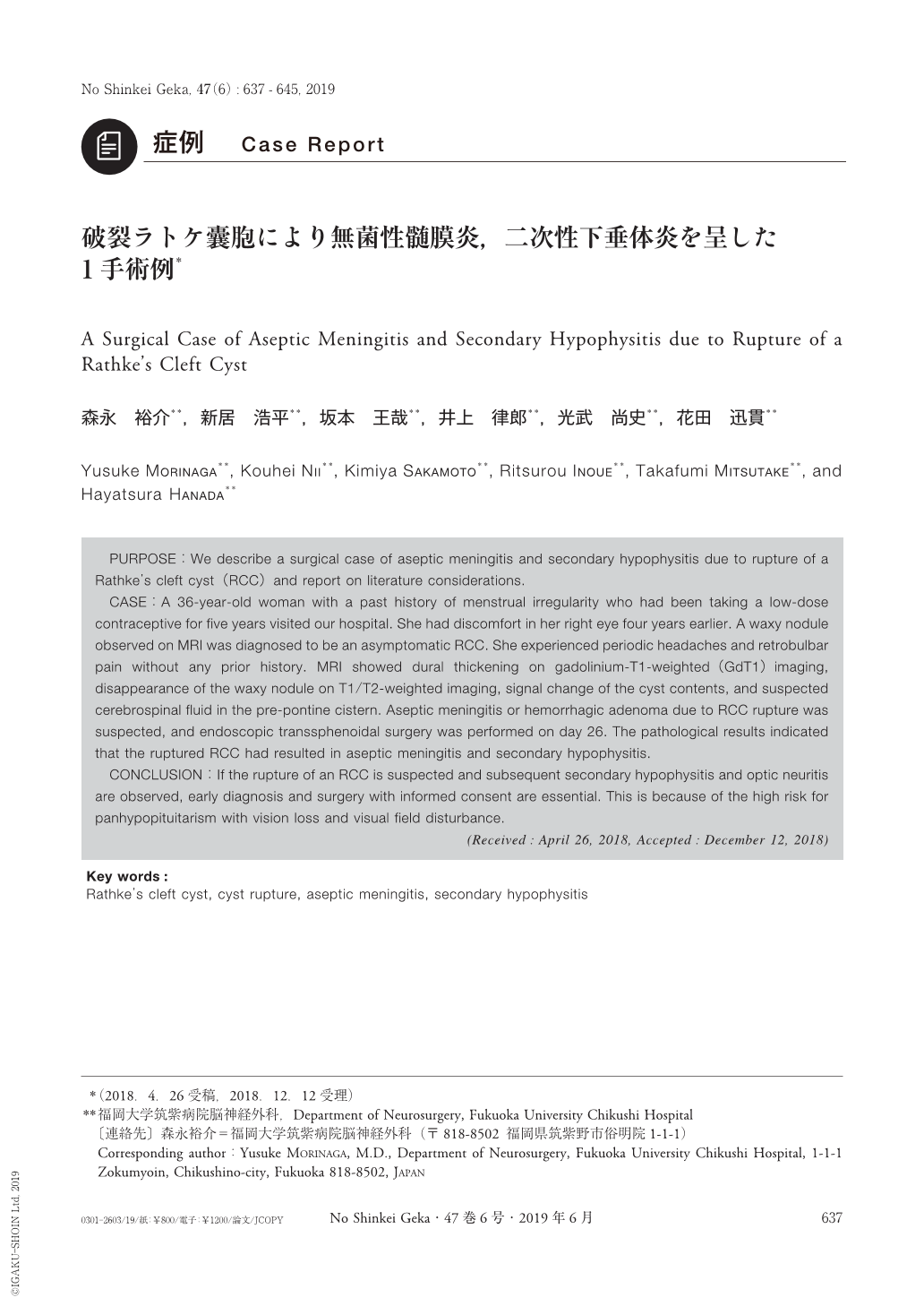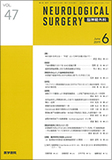Japanese
English
- 有料閲覧
- Abstract 文献概要
- 1ページ目 Look Inside
- 参考文献 Reference
Ⅰ.はじめに
周期的なラトケ囊胞(Rathke's cleft cyst:RCC)の破裂は強い炎症反応と組織障害を引き起こし,これが反復することで下垂体機能は廃絶に至るとされているため,破裂RCCの診断は重要である.また,慢性炎症はさまざまな病態(腫瘍化も含む)を招来する基本的な病態として知られている5).今回われわれは,無症候性RCCの経過観察中に周期性頭痛と球後痛で発症したRCCの破裂により無菌性髄膜炎,二次性下垂体炎を呈した1手術例を経験したため,その臨床経過・病理像を提示し,文献的考察を加えて報告する.
PURPOSE:We describe a surgical case of aseptic meningitis and secondary hypophysitis due to rupture of a Rathke's cleft cyst(RCC)and report on literature considerations.
CASE:A 36-year-old woman with a past history of menstrual irregularity who had been taking a low-dose contraceptive for five years visited our hospital. She had discomfort in her right eye four years earlier. A waxy nodule observed on MRI was diagnosed to be an asymptomatic RCC. She experienced periodic headaches and retrobulbar pain without any prior history. MRI showed dural thickening on gadolinium-T1-weighted(GdT1)imaging, disappearance of the waxy nodule on T1/T2-weighted imaging, signal change of the cyst contents, and suspected cerebrospinal fluid in the pre-pontine cistern. Aseptic meningitis or hemorrhagic adenoma due to RCC rupture was suspected, and endoscopic transsphenoidal surgery was performed on day 26. The pathological results indicated that the ruptured RCC had resulted in aseptic meningitis and secondary hypophysitis.
CONCLUSION:If the rupture of an RCC is suspected and subsequent secondary hypophysitis and optic neuritis are observed, early diagnosis and surgery with informed consent are essential. This is because of the high risk for panhypopituitarism with vision loss and visual field disturbance.

Copyright © 2019, Igaku-Shoin Ltd. All rights reserved.


